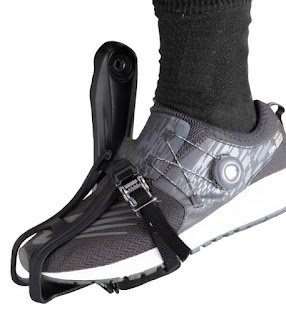Cheer up, sleepy Jean
Oh, what can it mean?
“Daydream Believer” – which was written by John Stewart just before he left the Kingston Trio – became the Monkees’ third and final #1 single in December 1967.
Anne Murray’s 1979 cover of the song was one of my mother’s favorite records, so I’m featuring it rather than the original Monkees’ recording today.
* * * * *
My mother, who died exactly one year ago today, went by her middle name – which was Jean.
Her first name was Emma, which she loathed for some reason. One of the many indignities of her final years was that she was usually called Emma by her various caregivers – after all, that was the name that appeared first on her Medicare and Social Security cards, and most people understandably assumed that was the name she went by.
 |
| My mother in 1974 |
My late father didn’t like his first name –which was Harry – either. He preferred to be called David, which was his middle name.
The columbarium marker that identifies their final resting place gives their names as H. David Hailey and E. Jean Hailey. That’s sort of odd, I think, but it’s what they wanted.
* * * * *
My father and mother lived in Joplin, Missouri, for virtually all of their adult lives. He was 90 years old when he died in January 2016 – just a few days after we had celebrated my mother’s 90th birthday.
I and my children tried to persuade my mother to move out of her house in Joplin and into assisted living immediately after my father’s death. She refused to do so – not surprisingly, since she had just suffered the most traumatic loss of her life, and was reluctant to abandon what was familiar and comfortable for her.
But a few months later, she fell and broke a bone in her neck. Fortunately, that fracture did not result in any paralysis or other serious medical complications. But it was clearly no longer safe for her to be living alone in her house, and she agreed to let us move her to an assisted living apartment just a few miles away from my home in the Maryland suburbs of Washington, DC.
I hoped that being close to her four grandchildren – all of whom lived nearby – and the great-grandchildren that they were beginning to produce at a prolific rate would help her move on from the loss of my father and their home. But that never really happened.
 |
My mother with her oldest
great-grandchild in 2018 |
Part of that was due to age-related dementia, which caused her to become inordinately anxious and fearful despite our efforts and those of her caregivers.
But her real problem was losing my father – her husband of over 68 years. The loss of his love and companionship was a terrible blow to her, but what I think hurt just as much was that his absence meant that she had no one left to care for – and caring for the needs of her family was my mother’s real purpose in life.
* * * * *
Prior to the onset of covid-19 in 2020, I visited my mother almost every day. Some days, I would drag her to the daily chair exercise sessions down the hallway from her apartment. Other days I would have breakfast or lunch with her.
Occasionally, I would bring her to my home for Sunday dinner, or for birthdays or holiday celebrations. But it made her very anxious to leave her apartment for any length of time – as soon as we left, she’d beseech me to turn around because she was afraid they weren’t going to let her back in her the building, and would try to open her car door while we were moving.
Covid put an end to face-to-face contacts between residents and non-residents for about a year. Eventually outdoor visits were allowed, but she wanted no part of sitting outside during the winter.
 |
| A window visit during covid |
To make matters worse, my mother’s hearing had become so bad the last year or two of her life that we couldn’t really communicate on the telephone – despite her very expensive hearing aids.
* * * * *
She had something of a respite in early 2021, when we were able to enroll her in a long-term hospice program that provided not only skilled nursing care but also two very kind and patient companions who alternated staying with her from 8:00 am to 8:00 pm everyday.
We were given plenty of warning when it looked like the end was approaching, and the hospice staff made sure that her final days were peaceful and as free as possible of pain or distress.
My children had the opportunity to say their farewells, and my sister had time to fly to Washington and spend several days with her before she quietly passed away. My sister’s visits always had a remarkable effect on my mother’s mood, and her final visit was no exception – she rallied noticeably despite being very near the end of her life.
* * * * *
I think my family would tell you that I’m a lot more like my father than I am my mother. I’m proud of the parts of me that I inherited from my father, but I’d clearly be a better person if I had inherited more of my mother’s personality.
 |
A photo of my mother (the smallest girl),
her mother, her maternal grandparents,
and her six aunts and uncles (circa 1932) |
The one aspect of my life that I can say is entirely the result of her influence is music. She had played the piano and the clarinet as a student, and insisted that I start piano lessons when I was in 2nd grade. I didn’t really take to practicing the piano – she had to push me to do so, and I’m sure I tried her patience with my tendency to practice just enough to get by.
But she persisted, and eventually I progressed enough that I started having opportunities to perform in public – as a soloist, an accompanist, and a member of our high school’s jazz band and other ensembles.
Many of my best memories of growing up relate to music, and I still love listening to and talking about music. My life has been enriched greatly because of my involvement with music. And for that, I have her and her alone to thank.
 |
| My mother at age 21 |
Looking back, I know how much she enjoyed seeing me perform. A few years ago, I dug out some of my old piano music and put together a short program that I performed for her and an audience of several dozen of the other residents at her assisted living facility. I played that music better when I was a teenager than I did 50 years later, but no matter. I like to think that my performance took my mother back – at least briefly – to happier times.
* * * * *
I asked my son and daughter to take part in the long-delayed memorial service we held for my mother a few days ago in Joplin by reading these verses from the hymn “Come, Labor On” – which has always moved me:
Come, labor on!
Who dares stand idle, on the harvest plain
While all around him waves the golden grain?
And to each servant does the Master say,
Go work today.
Come, labor on!
Claim the high calling angels cannot share –
To young and old the Gospel gladness bear.
Redeem the time; its hours too swiftly fly.
The night draws nigh.
Come, labor on!
No time for rest, till glows the western sky,
Till the long shadows o’er our pathway lie,
And a glad sound comes with the setting sun,
Well done, well done!
Come, labor on!
The toil is pleasant, the reward is sure;
Blessed are those who to the end endure;
How full their joy, how deep their rest shall be,
O Lord, with Thee!
Click here to listen to “Come, Labor On!”
* * * * *
The words of that hymn speak very directly to me about my mother’s life and legacy.
My mother never “dared stand idle” – she kept busy. For her, there was rarely “time for rest” before the long shadows finally fell over her pathway at the end of her life.
But she was more than just a hard worker. Hard work is too often done for selfish reasons – an attempt to achieve personal fame and fortune, or in the hope of exceeding the accomplishments of rivals.
By contrast, my mother’s hard work was never done for her own advantage, but selflessly and out of love and concern for her family.
* * * * *
My sister and I were the first beneficiaries of her caregiving. Nothing was more important to her than our happiness and well-being – she was always on our side, and we could always count on her to be proud and supportive of us.
 |
| Christmas 1960 |
She couldn’t have been a better grandmother to my four children. She and my father would fly back and forth to Joplin when my kids were young – they kept them for a couple of weeks each summer, and a week or so after Christmas. Now that I’m a grandparent, I know just how tiring it is to oversee one or two young children for an overnight visit – much less care for four children for two weeks. Her only complaint was that we lived so far away, and that she couldn’t spend more time with her grandkids.
My mother was an only child, and when my widowed grandmother got older and needed help with everything from grocery shopping, to getting to doctor’s appointments, to doing her taxes, to mowing her lawn, the responsibility fell entirely on my mother’s shoulders. My grandmother was able to remain in her home until she died just before her 95th birthday thanks to my mother’s selfless assistance.
Her final caregiving assignment was my father – given that he had health problems and physical limitations that became more and more serious as time went on, taking care of him would have been no easy task for a much younger person. But she somehow managed – even at 90 years of age – to keep things going with very little outside help.
 |
| At the doctor's office in 2016 |
I now know just how much of a struggle daily life had become for my parents at the end. But my mother rarely asked for help – not out of pride, but because she didn’t want to be a burden to my sister or me.
* * * * *
In “Come, Labor On,” the master acknowledges his faithful servant’s efforts at the end of the day with the words “Well done, well done!”
For all that she did for others – my grandmother, my father, my sister and me, and her grandchildren – my mother certainly deserved to hear “Well done, well done!” as the night fell on her life.
The hymn assures us that “those who to the end endure” will be blessed. “How full their joy, how deep their rest shall be,” it promises.
That’s a comforting thought, isn’t it?
* * * * *
Click here to listen to Anne Murray’s cover of “Daydream Believer.”
























